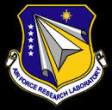AFRL posts BAA for human performance sensing
 On January 19, the Air Force Research Laboratory (AFRL) posted a broad agency announcement for human performance sensing (BAA-RQKHB-2015-0003). White Papers are due no later than February 18, 2016, 3:00 pm EST by any acceptable courier, delivery service, or hand delivery.
On January 19, the Air Force Research Laboratory (AFRL) posted a broad agency announcement for human performance sensing (BAA-RQKHB-2015-0003). White Papers are due no later than February 18, 2016, 3:00 pm EST by any acceptable courier, delivery service, or hand delivery.
Today’s ever-changing warfront provides many challenges that the Air Force must overcome in order to remain the leaders in air, space and cyberspace. To battle these challenges, the latest technological resources and advances are explored and implemented. While technology continues to grow and evolve at a rapid pace, it becomes increasingly difficult for the most important AF asset, the human operator, to optimally perform. The need for quantifying the operator’s state through human performance sensing technologies is vital to the success and superiority of the DoD.
A key approach to improving overall performance for the human is to implement the sense-assess-augment paradigm. This holistic method provides information in a closed-loop fashion which will help to exploit and understand individual differences among operators and develop strategies to mitigate performance decrements.
AFRL has demonstrated supervisory control technologies that enable a single airman to effectively manage multi-unmanned vehicle intelligence, surveillance, and reconnaissance missions, yet there are times when mission events or system anomalies push the airman’s workload beyond manageable levels. When pushed beyond manageable levels the results can include degraded airman situation awareness, delayed execution or shedding of tasks, and assorted errors of omission and commission – potentially yielding ineffective or failed missions.
The increased introduction of autonomous vehicles and agents hopes to assist with some of these issues, but it must be accompanied by the required autonomy human factors research of balancing airman-autonomy teaming. Key to balancing airman-autonomy teaming is how to develop shared perception and understanding between airman operators and autonomous platforms and agents. Achieving this shared perception and understanding requires accurate human performance sensing utilizing non-invasive cognitive assessment, non-invasive biomarker sensing and eye-tracking technologies to name but a few. It further requires the creation and validation of personalized LVC learning environments informed by mission performance measurement, mission planning, feedback, and after action review. The following research objectives are aimed at accounting for mission uncertainties and achieving real-time airman-machine teaming with the use of human performance sensing and assessing to effectively adapt and achieve mission objectives.
Full information is available here.
Source: FedBizOpps







